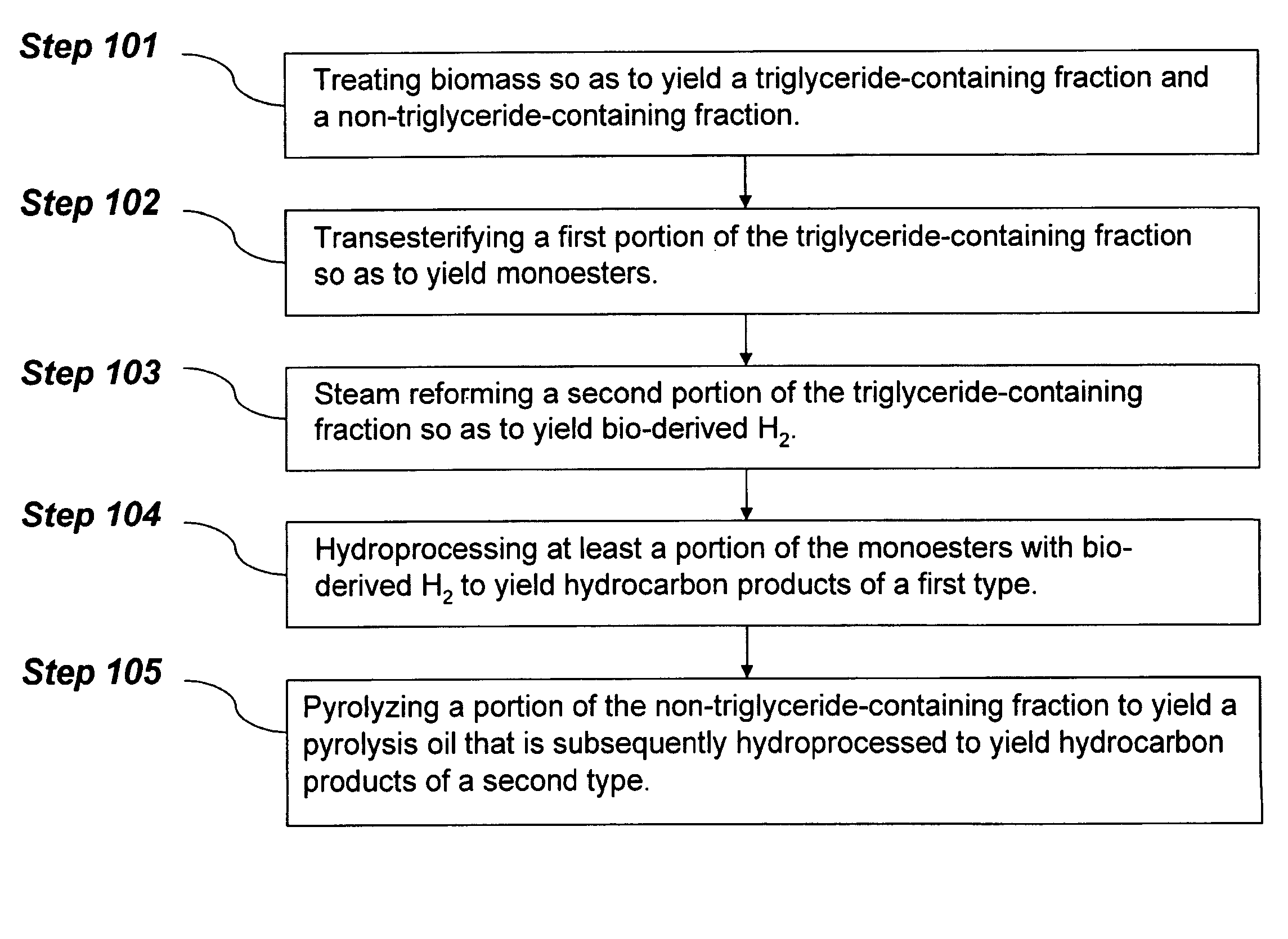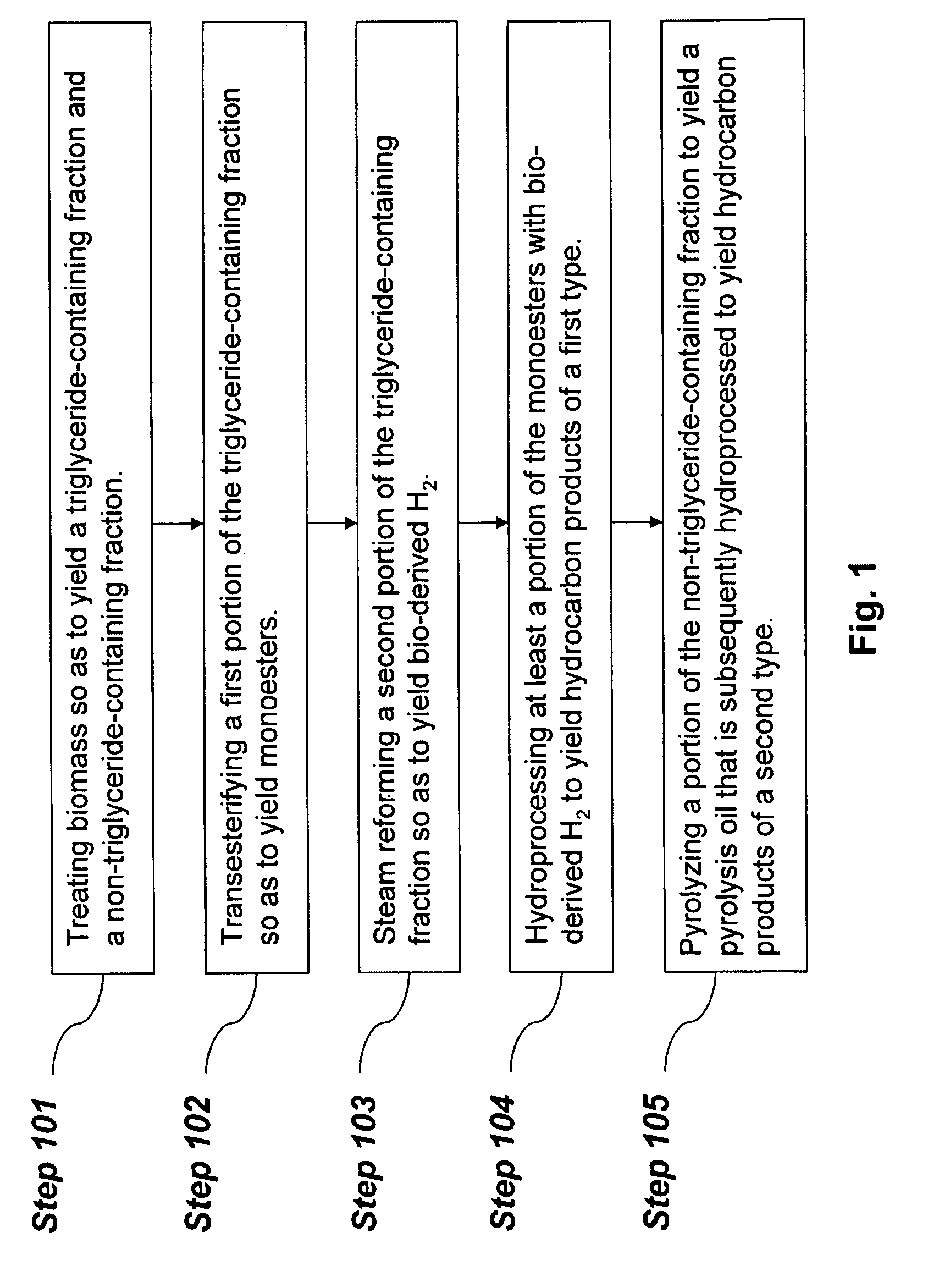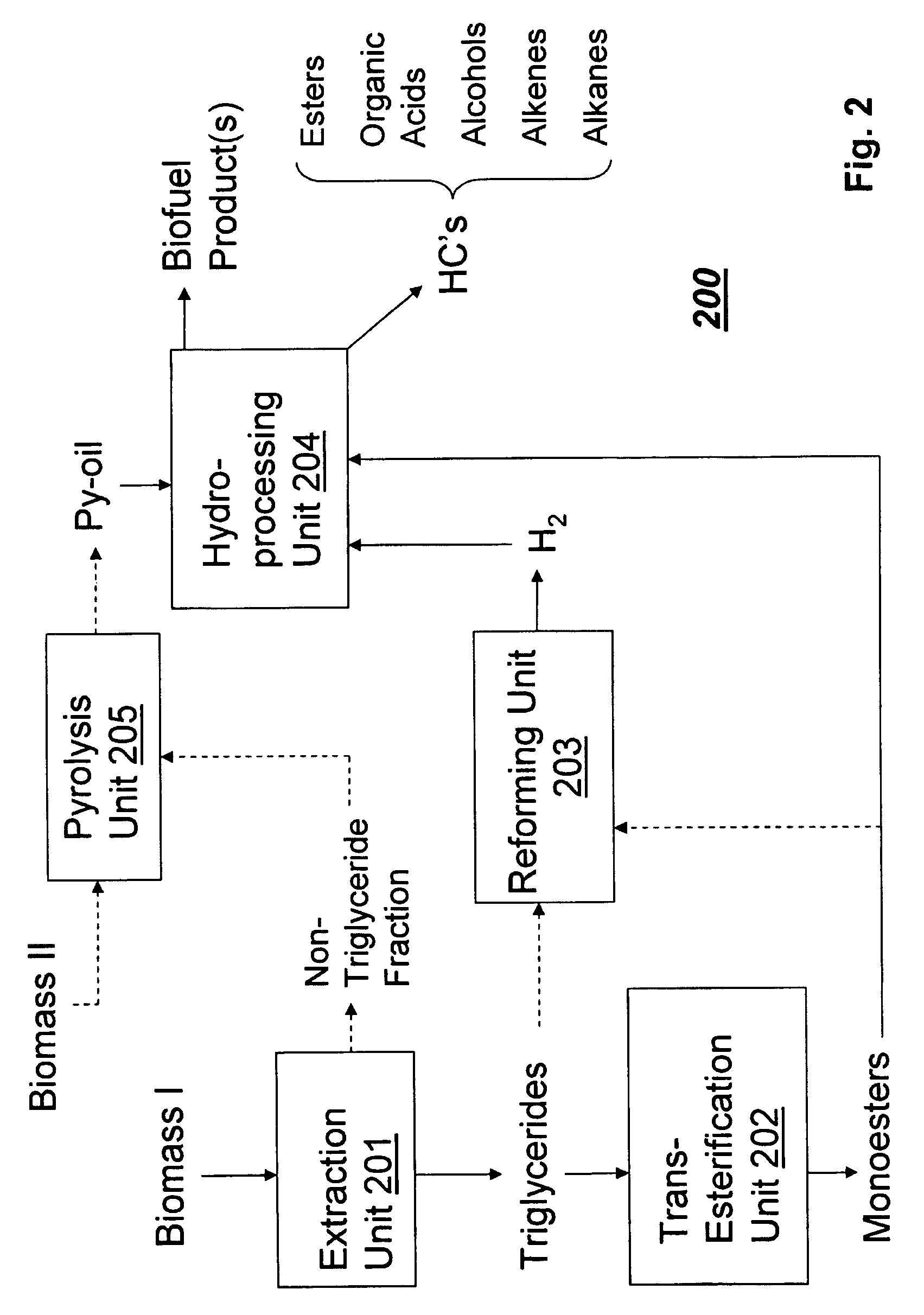Selective, integrated processing of bio-derived ester species to yield low molecular weight hydrocarbons and hydrogen for the production of biofuels
a technology of bio-derived ester and hydrocarbons, which is applied in the direction of fuels, fatty acid chemical modifications, waste based fuels, etc., can solve the problems of low energy content of biofeedstocks, inability to meet the needs of high-efficiency energy production, and inability to meet the needs of biofeedstocks,
- Summary
- Abstract
- Description
- Claims
- Application Information
AI Technical Summary
Problems solved by technology
Method used
Image
Examples
example
[0068]This Example serves to illustrate a cryogenic preprocessing technique for use in some embodiments of the present invention.
[0069]For processing of cellulose to glucose (via hydrolysis), the efficiency of such hydrolysis is enhanced by a de-bundling of the associated fibers (thereby increasing surface area), and by a separation of the holocellulose (cellulose+hemicellulose) from lignin (when the biomass is a lignocellulosic material). Accordingly, the inventors have developed a method by which cellulosic / lignocellulosic fibers are cryogenically treated with liquid N2 (LN2) during a mechanical grinding process. As a result, hydrolysis conditions were milder (reduced residence time, lower temperatures) and used less acid.
7. Conclusion
[0070]In summary, the present invention provides for methods and systems for processing biomass to selectively yield a variety of hydrocarbon molecules and hydrogen as products, wherein some or all of these products can be further utilized for other ...
PUM
| Property | Measurement | Unit |
|---|---|---|
| partial pressure | aaaaa | aaaaa |
| temperature | aaaaa | aaaaa |
| temperature | aaaaa | aaaaa |
Abstract
Description
Claims
Application Information
 Login to View More
Login to View More - R&D
- Intellectual Property
- Life Sciences
- Materials
- Tech Scout
- Unparalleled Data Quality
- Higher Quality Content
- 60% Fewer Hallucinations
Browse by: Latest US Patents, China's latest patents, Technical Efficacy Thesaurus, Application Domain, Technology Topic, Popular Technical Reports.
© 2025 PatSnap. All rights reserved.Legal|Privacy policy|Modern Slavery Act Transparency Statement|Sitemap|About US| Contact US: help@patsnap.com



